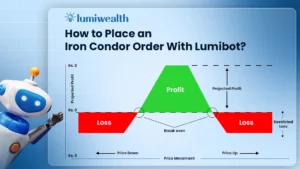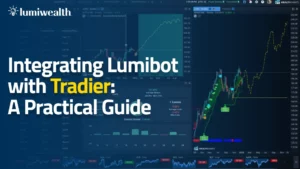In the dynamic world of financial markets, Algo Trading Strategies have emerged as a powerful tool for traders and investors seeking an edge. These strategies leverage advanced algorithms to automate trading processes, optimizing the execution of trades and managing portfolios with unparalleled precision. If you’re looking to dive into the world of algorithmic trading, understanding these strategies and how to implement them can be the key to your success.
What Are Algo Trading Strategies?
Algo trading, or algorithmic trading, involves using computer programs to execute trades based on predefined criteria. These algorithms can analyze vast amounts of market data in real time, execute trades at high speeds, and make decisions based on complex mathematical models. The primary goal of algo trading is to maximize trading efficiency and profitability while minimizing human error and emotional decision-making.
There are several types of strategies, each designed to achieve specific objectives. Here are a few common ones:
- Trend Following Strategies: These algorithms aim to identify and capitalize on market trends. They typically use moving averages and other trend indicators to make trading decisions.
- Arbitrage Strategies: Arbitrage algorithms capitalize on price discrepancies between various markets or instruments. They achieve this by concurrently buying and selling related assets to profit from price variations.
- Market Making Strategies: Market makers use algorithms to provide liquidity to the market by continuously quoting buy and sell prices. This strategy aims to profit from the spread between the bid and ask prices.
- Mean Reversion Strategies: These algorithms assume that asset prices will revert to their mean over time. They look for deviations from historical averages and execute trades to profit from the expected return to the mean.
- Statistical Arbitrage Strategies: These strategies use statistical models to identify and exploit price inefficiencies. They often involve complex quantitative analysis and high-frequency trading.
Why Use Algo Trading?
The benefits of using algo trading are manifold:
- Speed and Efficiency: Algorithms can execute trades in milliseconds, significantly faster than human traders. This rapid execution enables traders to capitalize on market opportunities that might otherwise be missed.
- Accuracy: Algorithms reduce the risk of human error and emotional biases. By adhering to predefined criteria, they ensure consistency in trading decisions.
- Backtesting: Traders can test their strategies on historical data to evaluate their effectiveness before deploying them in live markets. This process helps in refining and optimizing trading strategies.
- Scalability: Algorithms can handle large volumes of trades simultaneously, making them ideal for high-frequency trading and managing large portfolios.
- Cost Reduction: Automated trading can lower transaction costs by optimizing trade execution and minimizing the impact of market volatility.
Learning Algo Trading
If you’re interested in mastering algo trading, enrolling in a course can be an excellent starting point. Courses offer comprehensive training on the principles of algorithmic trading, including strategy development, programming, and risk management. They provide hands-on experience with trading algorithms and help you understand how to apply them in various market conditions.
For those seeking advanced knowledge, courses may also cover the integration of AI Trading Algorithms. AI-driven algorithms use machine learning and artificial intelligence to enhance trading strategies. By analyzing large datasets and learning from market patterns, AI algorithms can adapt to changing market conditions and make more informed trading decisions.
Implementing Algo Trading
Once you’ve gained a solid understanding of algo trading, the next step is implementation. Here’s a step-by-step guide to getting started:
- Define Your Objectives: Determine what you want to achieve with your trading strategy. Are you focusing on short-term gains, long-term investments, or a combination of both?
- Develop Your Strategy: Choose an appropriate trading strategy based on your objectives. Design your algorithm to meet specific criteria and incorporate risk management techniques.
- Backtest Your Strategy: Test your algorithm using historical data to assess its performance. Identify any weaknesses and refine your strategy accordingly.
- Choose a Trading Platform: Select a trading platform that supports algorithmic trading and provides access to real-time market data. Ensure the platform is compatible with your algorithm and offers the necessary tools for monitoring and execution.
- Deploy and Monitor: After your algorithm is set up, implement it in live markets. Regularly track its performance and adjust as necessary to maintain its effectiveness.
- Evaluate and Optimize: Regularly review your algorithm’s performance and make improvements based on market changes and new insights.
The Future of Algo Trading
The field of algorithmic trading is continually evolving, with advancements in technology driving innovation. AI and machine learning are playing increasingly significant roles, enabling more sophisticated trading strategies and enhancing predictive capabilities.
As you explore trading strategies, staying updated with the latest trends and technologies is crucial. Engaging in ongoing education, such as advanced courses in algorithmic trading, can help you stay ahead of the curve and refine your strategies.
In conclusion, mastering these strategies can provide a competitive edge in the financial markets. By leveraging the power of algorithms, you can enhance trading efficiency, accuracy, and profitability. Whether you’re a novice trader or an experienced professional, investing in a course can be a valuable step toward achieving your trading goals.
Ready to elevate your trading skills? Explore our website to learn more about how our Algorithmic Trading Course can help you succeed in the world of algo trading.




